Elixir
Elixir is a modern, functional, concurrent programming language built on top of the Erlang VM. It takes advantages of Erlang's rock-solid fault-tolerance and scalability while also introducing cleaner and more maintainable syntax. Elixir is well-suited for building distribut
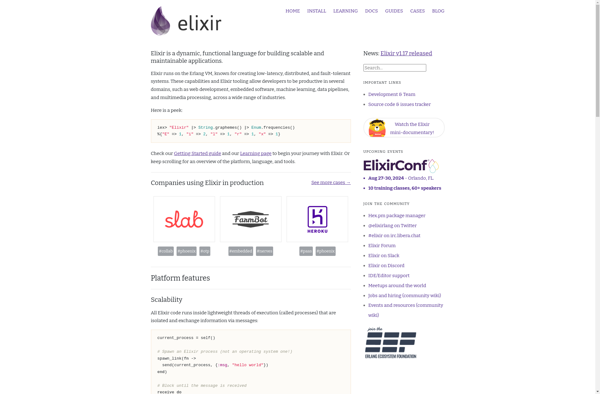
Elixir: Modern Functional Programming
A concurrent programming language built on Erlang VM, offering cleaner syntax and improved maintainability while maintaining rock-solid fault tolerance and scalability.
What is Elixir?
Elixir is a modern, functional, concurrent programming language built on top of the Erlang virtual machine (BEAM). It was designed by José Valim and first released in 2011.
Some key features and advantages of Elixir include:
- Functional, immutable data structures. Elixir emphasizes functional programming with immutable data, meaning data cannot be changed once created. This helps prevent unexpected side effects and makes parallel code easier to reason about.
- Excellent concurrency and parallelism. Elixir leverages the actor model provided by Erlang to achieve massive concurrency. Code runs seamlessly across all available CPU cores.
- Fault tolerance and scalability. By running on the battle-tested Erlang VM, Elixir inherits rock-solid fault tolerance and scalability capable of running low-latency, distributed applications with high uptime.
- Modern, Ruby-like syntax. Elixir uses a clean, modern syntax that is easy to read and write, with many similarities to Ruby.
- Excellent tooling. Elixir provides build tooling, dependency management, test runners, previewing capabilities and more out of the box via the included Mix build tool.
- Productive and extensible. Elixir is highly extensible, with meta programming capabilities that enable massive reductions in boilerplate code compared to other languages.
Well-suited industries and use cases for Elixir include web applications, real-time applications, distributed systems, critical systems that require high uptime, and more. Some famous companies using Elixir in production include Pinterest, Moz, Bleacher Report and The Farmer's Dog.
Elixir Features
Features
- Functional programming paradigm
- Concurrency and parallelism
- Fault-tolerance and scalability
- Erlang VM integration
- Metaprogramming capabilities
- Robust standard library
- Powerful testing framework
- Excellent documentation and community support
Pricing
- Open Source
Pros
Highly scalable and fault-tolerant
Efficient for building distributed systems
Expressive and readable syntax
Powerful metaprogramming features
Extensive ecosystem and community support
Excellent performance and reliability
Cons
Smaller ecosystem compared to more established languages
Steeper learning curve for developers new to functional programming
Limited support for certain types of applications (e.g., GUI-based)
Official Links
Reviews & Ratings
Login to ReviewThe Best Elixir Alternatives
Top Development and Programming Languages and other similar apps like Elixir
Here are some alternatives to Elixir:
Suggest an alternative ❐Python
Python is a high-level, general-purpose programming language that emphasizes code readability and rapid application development. It was created by Guido van Rossum in 1991 and has since become one of the most popular programming languages.Some key features of Python include:Easy to learn syntax that resembles everyday EnglishInterpreted language that can...
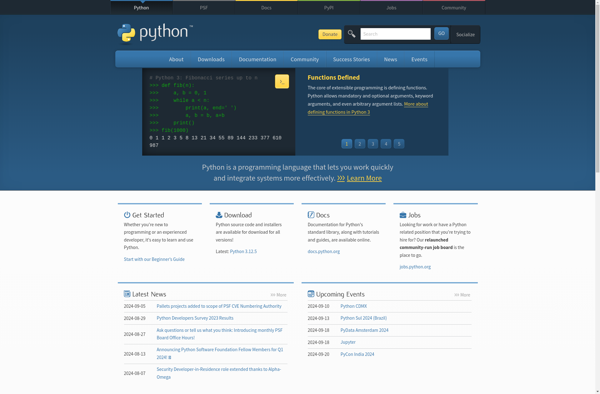
Go (Programming Language)
Go, also known as Golang, is an open source programming language first developed in 2007 by Robert Griesemer, Rob Pike, and Ken Thompson at Google. It combines the speed and efficiency of a compiled language like C or C++ with the ease of use and productivity of dynamic languages like...
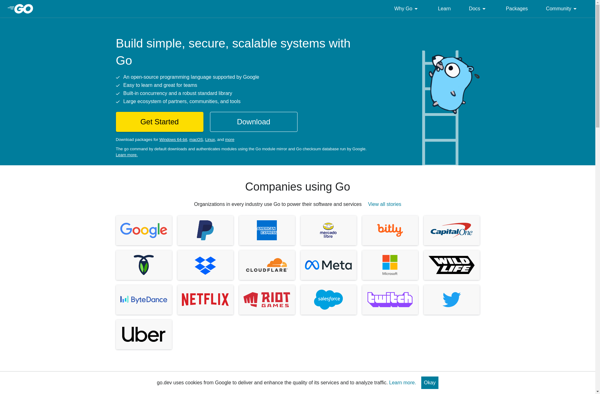
C#
C# is an object-oriented, general-purpose programming language developed by Microsoft. It was first released in 2002 as part of the .NET framework, and since then has become one of the most popular programming languages used for building a wide range of applications.Some key features of C# include:Object-oriented - Supports concepts...

JavaScript
JavaScript is a lightweight, interpreted programming language with first-class functions that allows you to implement complex features on web pages. When JavaScript runs in a browser, it can:Access and modify a web page's content and markupRespond to user actionsCommunicate asynchronously using callback functionsAlter a web page's stylingAnimate page elementsJavaScript has...
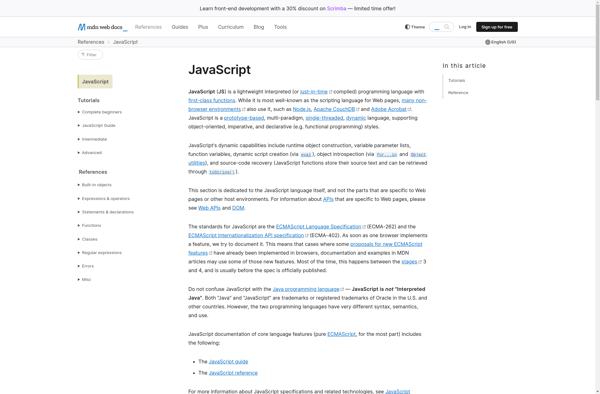
Node.js
Node.js is an open-source, cross-platform JavaScript runtime environment that allows developers to build server-side and network applications with JavaScript. It uses an event-driven, non-blocking I/O model that makes it lightweight and efficient.Some key features and benefits of Node.js:Asynchronous and event-driven - All APIs of Node.js library are asynchronous. This makes...
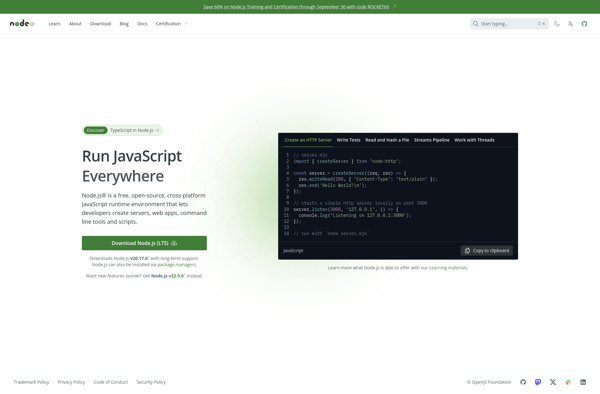
Haskell
Haskell is a statically typed, purely functional programming language that was designed to have very few implementation dependencies. It has a strong static type system with type inference and non-strict (lazy) evaluation by default. Some key features of Haskell include:Purity - Functions have no side effects, offering referential transparency and...

NoPrint.js
NoPrint.js is a lightweight JavaScript library designed to provide an easy way for web developers to disable printing functionality on their websites. With just a few lines of code, NoPrint.js overrides the standard window.print() method and prevents users from being able to print pages.This can be useful for web apps...
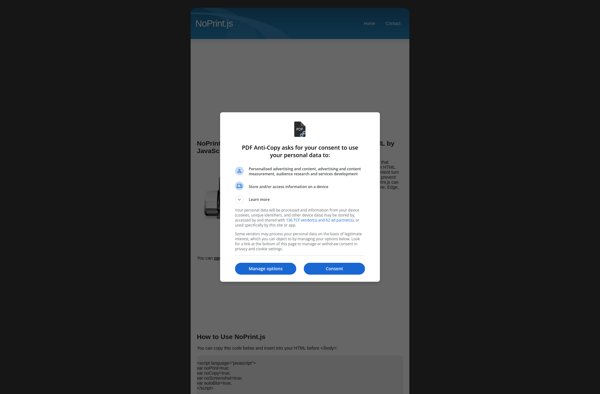
Coconut programming language
Coconut is a Python variant language that adds functional programming concepts and syntax on top of Python. Some key features of Coconut include:Pattern matching - Allows matching on data types and destructuring, like in ML languagesPipelining - Allows chaining operations in a readable wayImmutable data structures - Native support for...
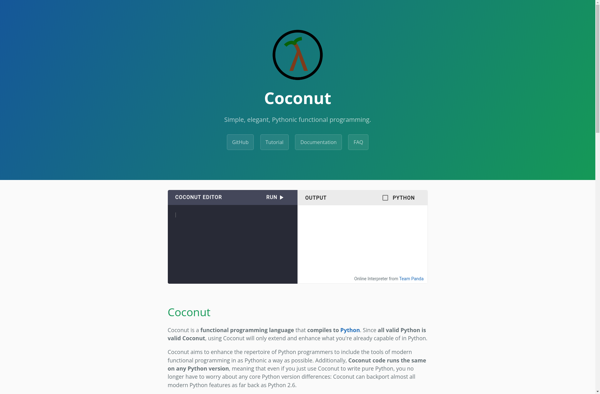
RhoMobile
RhoMobile is an open-source mobile application development framework created by Motorola for building native apps for multiple platforms, including iOS, Android, Windows Mobile, and Blackberry. It uses Ruby as the programming language and Rhodes as the Ruby-based framework.Some key features of RhoMobile:Write apps in Ruby code and deploy to native...
